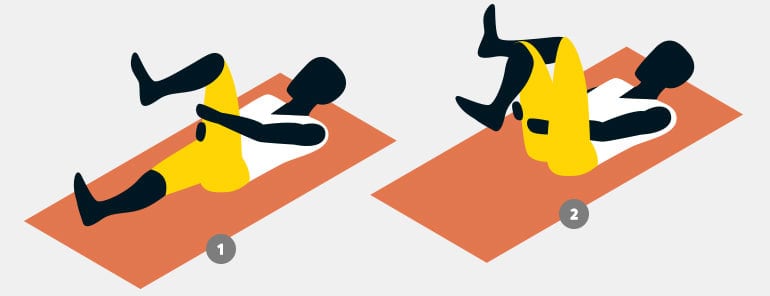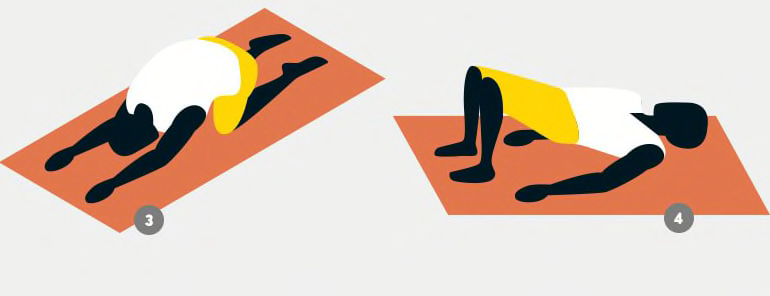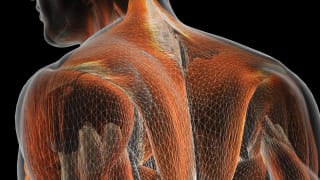Four Great Stretches
These movements can eventually ease pain and help keep it away, too. In each case, inhale deeply and then do a long, slow exhale as you relax into the stretch, says Rachel Feinberg, D.P.T., a physical therapist with the Feinberg Medical Group in Palo Alto, Calif. "Hold it for about 10 to 15 seconds, or whatever feels comfortable," she says. "Stop at any point if it feels painful."

1. Knee-to-Chest Stretch
Lie on your back with one knee bent. With hands on top of the knee or behind it, slowly pull it toward your chest and hold. You can also pull both knees to your chest at once.
2. Figure-Four Stretch
Lie on your back with knees bent. Place the outside of one ankle on the opposite thigh. If you're able, grasp the other leg behind the knee and slowly raise it, bringing your knees toward your chest.

3. Prayer Stretch
On your hands and knees, sit back so that your buttocks are resting on your heels. Reach your hands forward until you feel the stretch in your middle back. Reach forward and to the side to feel the stretch along the sides of your spine.
4. Bridging
Lie on your back with knees bent, feet flat on the floor. Using the back of your leg muscles (not your lower back), lift your buttocks and back high up from the floor. Hold the stretch, then slowly roll down to the starting position.

At Your Desk
It's unclear whether standing or sitting at a desk is better for you. What is clear is that how you sit or stand matters. And whether you sit or stand, it's always good to take frequent breaks to walk around, adjust your position throughout the day, and if possible, alternate between sitting and standing.
Sitting: You shouldn't have to look up or down to read your computer. Your shoulders should be relaxed, with upper arms at your sides and elbows close to your sides. Hands, wrists, and forearms should be straight and almost parallel to the floor. Don't let your lower back slump or arch. Keep your thighs almost parallel to the floor and your feet flat or on a footrest. Don't cross your knees or ankles.
Standing: Don't slump or lean forward. Your legs, torso, neck, and head should be in line and straight. Stand on a cushioned pad, and elevate one foot on a stool if that's comfortable.

Lifting
Bend at your knees to squat down rather than bending over at the waist, and keep your elbows close to your body and the object as close to you as possible. As you lift, be aware of tightening your stomach muscles and using your legs rather than your back. Don't arch backward. Turn by moving your feet, not twisting your torso.
More on Dealing With Back Pain
- The Better Way to Get Back-Pain Relief
- 5 Causes of Back Pain
- New Thinking on How to Relieve Back Pain
- How to Recover From a Back Injury
- Home Remedies for Back Pain: What Really Works
- Does Insurance Cover Acupuncture & Other Nondrug Therapies?
- The Link Between Chronic Pain and Depression
- Guide to Treating Back Pain
Editor's Note: This article also appeared in the June 2017 issue of Consumer Reports magazine.
This article and related materials are made possible by a grant from the state Attorney General Consumer and Prescriber Education Grant Program, which is funded by the multistate settlement of consumer-fraud claims regarding the marketing of the prescription drug Neurontin (gabapentin).





















